《IP路由技术基础 英文版》
| 作者 | (美)(R.怀特)Robert Wright著 编者 |
|---|---|
| 出版 | 北京:清华大学出版社 |
| 参考页数 | 295 |
| 出版时间 | 1999(求助前请核对) 目录预览 |
| ISBN号 | 7302034567 — 求助条款 |
| PDF编号 | 87628808(仅供预览,未存储实际文件) |
| 求助格式 | 扫描PDF(若分多册发行,每次仅能受理1册) |
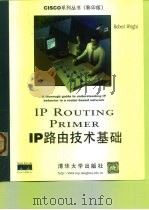
Chapter 1 Topology and Router Configurations1
Understanding the Role of Routers in Networks1
The Router Interface2
Network Layer Addresses2
Datagrams3
MAC Addresses4
IP Address Formats5
Network Reference Models6
Understanding Topology and Router Configurations9
RouterA s Configuration10
RouterB s Configuration11
RouterC s Configuration12
Understanding What a Router Does13
Sample Network13
How a Router Knows What to Do15
Choosing Your Routing Protocol16
Understanding How Forwarding Decisions Are Made18
Performing Longest Match Lookups18
Forwarding Decisions for Multipoint Interfaces21
End Systems Sending Packets to Other Subnets23
Summary25
Chapter2 Routing Metrics and Distances27
Primary Activities of Convergence27
Viewing the Invalid Timers in a Routing Table29
Viewing an Expired Invalid Timer in a Routing Table30
Router Still Uses a Path33
Understanding Convergence37
Parallel Paths38
The Effect of Parallel Paths on Convergence38
Looking at Parallel Paths in a Routing Table39
Convergence in Action40
The Routing Table After Convergence41
Step-by-Step Review of Convergence43
Debug Messages and Reality46
When Holddown Is Initiated46
Understanding Parallel Paths and Their Effect on Packet Forwarding47
Process Switching Versus Fast Switching50
Configuring Process Switching51
Configuring Fast Switching52
Understanding the Role of Split Horizon54
Routing Advertisements with Split Horizon Enabled56
Routing Advertisements with Split Horizon Disabled57
Routing Loops Caused by Disabling Split Horizon60
Loss of a Connected Route Versus a Dynamic Route64
Split Horizon s Effect on Multipoint WAN Interfaces65
Using Subinterfaces to Avoid Problems Caused by Split Horizon68
Poison Reverse and Triggered Updates70
IGRP Routing Metrics (Variables) and Cisco Administrative Distances72
IGRP Metrics (Variables)73
Administrative Distances74
Running Multiple Routing Protocols Concurrently76
Altering IGRP S Bandwidth and Delay Variables79
Problems with Manipulating the Delay Variable83
Understanding the Effects of Manipulating the Delay Variable84
Understanding the Effects of Manipulating the Bandwidth Variable87
Calculating IGRP Metrics90
Summary93
Chapter3 Discontiguous Networks, Summarization, and Subnet 095
Introduction to Terminology96
Discontiguous Networks Using RIP and IGRP98
Understanding How a Router Derives thd Correct Masks99
Understanding Summarization (Summarized Routes)103
Understanding Subnet 0104
Summarized Routes Versus Subnet 0105
Summarization Caused by Discontiguous Networks in Action106
RIP Cannot Reach Discontiguous Subnets107
Discontiguous Networks, Subnet 0, and Summarization Using IGRP109
Discontiguous Networks Using Two Routers111
Discontiguous Networks Using Three Routers112
When Connectivity Is Possible112
When Connectivity Is Not Possible120
Alternating Paths for the First Ping124
Using Other Routing Protocols126
Using Summarization as a Tool127
Summary129
Chapter4 Using IP Unnumbered and VLSM131
Understanding IP Unnumbered133
IP Unnumbered Causes Host Routes and Lost Connectivity133
Host Routes134
Hosts Routes Using DDR135
Configuring IP Unnumbered on Serial Interfaces138
RIP and IGRP Behave the Same139
RIP with IP Unnumbered Configured Properly140
Displaying the Routes140
Sending Routing Updates141
RIP with IP Unnumbered Configured Improperly142
Pinging the Interfaces142
Examples of Routing Updates144
Host Route Problem145
Lost Routes Problem146
Using a Different Subnet Mask and a Different Major Net147
Understanding VLSM153
VLSM Using RIP and IGRP153
VLSM Experiment Using Two Routers154
VLSM Experiment Using Three Routers157
Correctly Configuring VLSM Blocked Routes160
VLSM Summary162
Summary162
Introduction to Default Routing163
Chapter5 Default Routing163
Gateway of Last Resort165
Gateway of Last Resort for a Non-Local Domain168
Gateway of Last ResortFails for a Local Domain169
Gateway of Last Resort Still Works When Links Fail173
Using IP Classless174
In Review175
Using Default and Static Routes in Complicated Networks177
Using Static Routes177
Dealing with Too Much Default Routing Information179
Fixing a Default Gateway Loop185
RIP and 0.0.0.0187
The 0.0.0.0 Default Route187
Using 0.0.0.0 with IGRP198
What to Do Instead of Using 0.0.0.0 with IGRP198
Using End Systems with Multiple Local Gateways203
ICMP Router Discovery Protocol (IRDP) RFC 1256204
End Systems Using RIP205
Cisco s Hot Standby Router Protocol (HSRP)209
Using Floating Static Routes212
Summary215
Chapter 6 IP Troubleshooting Scenarios217
Developing a Troubleshooting Routine217
Using a Troubleshooting Scenario219
Tracing the Route220
Checking the Available Routes220
Using Extended Pings to Track Connectivity223
Other Possible Problems225
An ARP Problem225
Validating End System Routing Tables226
Summary230
Chapter7 Bridging IP Between Dissimilar Media233
Translational Bridging233
MSB Versus LSB234
Bit Swapping MAC Addresses235
ARP Explained237
Translating Bridges and ARP Frames239
ARP in Action240
Vendor-Specific Solutions to ARP243
Static ARPs245
Displaying the Parameters of the ARP.EXE Command245
Displaying the Current ARP Entries246
How to Create a Static ARP Entry and Display It246
Deleting Static ARP Entries246
Summary247
Chapter8 Hexadecimal and Binary Numbering and IP Addressing249
Binary Numbering Versus Decimal Numbering249
Hexadecimal Numbering Versus Decimal Numbering252
Introduction to the 32-B it IP Address255
Classes of Addresses256
Default Subnet Masks for Class A, B, C, and D Addresses257
Understanding Subnet Masks, Subnetting, and Supernetting258
Determining What Subnet Is Being Used263
The Shorthand Subnet Mask Indicator265
Introduction to Supernetting266
Calculating Subnet and Host Combinations267
Summary267
Appendix A RFCs269
How RFCs Work269
RFCs Recommended for Further Study270
RFC2235: HobbesInternet Timeline270
RFC2031: IETF-ISOC Relationship271
RFC2028: The Organizations Involved in the IETF Standards Process271
RFC2200: Internet Official Protocol Standards271
RFC2101: IPv4 Address Behavior Today271
RFC2151: A Primer on Internet and TCP/IP Tools and Utilities271
RFC2027: IAB and IESG Selection, Confirmation, and Recall Process: Operation of the Nominating and R272
RFC2026: The Internet Standards Process: Revision3272
RFC2008: Implications of Various Address Allocation Policies for Internet Routing272
RFC1935: What Is the Internet, Anyway?272
RFC1925: The Twelve Networking Truths272
RFC1812: Requirements for IP Version 4 Routers273
RFC1917: An Appeal to the Internet Community to Return Unused IP Networks (Prefixes) to the IANA273
RFC1878: Variable Length Subnet Table for IPv4273
RFC1923: RIPv1 Applicability Statement for Historic Status273
RFC1918: Address Allocation for Private Internets273
RFC1631: The IP Network Address Translator (NAT)274
RFC1601: Charter of the Internet Architecture Board (IAB)274
RFC1508: Guide to Network Resource Tools274
RFC1393: Traceroute Using an IP Option274
RFC1256: ICMP Router Discovery Messages274
RFC1058: Routing Information Protocol275
RFC826: An Ethernet Address Resolution Protocol275
RFC1700: Assigned Numbers275
RFC1149: A Standard for the Transmission of IP Datagrams on Avian Carriers275
RFC1178: Choosing a Name for Your Computer275
RFC1180: A TCP/IP Tutorial275
RFC1543: BOOTP276
RFC2283, RFC1966, RFC1965, RFC1774, RFC1773, RFC1772, RFC1771, RFC1745: Border Gateway Protocol V4 (276
RFC1817, RFC1520, RFC1519, RFC1518, RFC1517: Classless Interdomain Routing (CIDR)276
RFC2132, RFC2131, RFC1534: Dynamic Host Configuration Protocol (DHCP)277
RFC2308, RFC2230, RFC2219, RFC2182, RFC2181, RFC2136, RFC2052, RFC1996, RFC1995, RFC1912, RFC1794, R277
RFC2178, RFC1745, RFC1587, RFC1586, RFC1585, RFC1584, Open Shortest Path First (OSPF)278
RFC1931, RFC1293: Reverse Address Resolution Protocol (RARP) Inverse RARP278
RFC2092, RFC2091, RFC1723, RFC1722, RFC1721, RFC1582, RFC1581: RIP278
RFC2072, RFC2071: Router Renumbering279
RFC2001: TCP/IP (TCP) Slow Start279
RFC1470: TCP/IP Debugging Tools279
Summary280
Index281
1999《IP路由技术基础 英文版》由于是年代较久的资料都绝版了,几乎不可能购买到实物。如果大家为了学习确实需要,可向博主求助其电子版PDF文件(由(美)(R.怀特)Robert Wright著 1999 北京:清华大学出版社 出版的版本) 。对合法合规的求助,我会当即受理并将下载地址发送给你。
高度相关资料
-
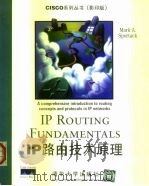
- IP路由技术原理 英文版
- 1999 北京:清华大学出版社
-

- TCP/IP路由技术卷一
- 1999
-
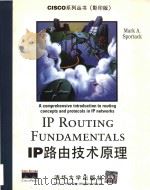
- IP Routing fundamentals = IP 路由器技术原理 (影印版)
- 1999 清华大学出版社
-

- 电子电路技术基础
- 1982 成都:四川人民出版社
-

- 模拟电子技术基础 电子技术基础I 第2版
- 1980 北京:高等教育出版社
-
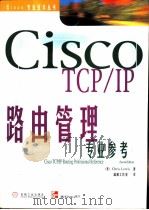
- Cisco TCP/IP路由管理专业参考
- 1999 北京:机械工业出版社
-

- 电路基础 修订版
- 1987 成都:西南交通大学出版社
-
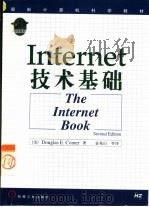
- Internet技术基础 2版
- 1999 北京:机械工业出版社
-
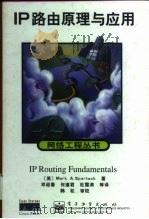
- IP路由原理与应用
- 1999 北京:电子工业出版社
-

- 软件技术基础 修订版
- 1994 北京:北京航空航天大学出版社
-

- 液压技术基础 修订版
- 1985 北京:机械工业出版社
-

- 电工技术基础 第2版
- 1994 北京:高等教育出版社
-
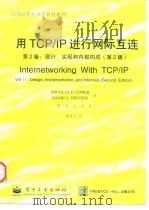
- 用TCP/IP进行网际互连 第2卷 设计、实现和内部构成 第2版
- 1998 北京:电子工业出版社
-
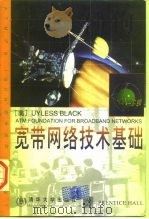
- 宽带网络技术基础 英文版
- 1998 北京:清华大学出版社
提示:百度云已更名为百度网盘(百度盘),天翼云盘、微盘下载地址……暂未提供。➥ PDF文字可复制化或转WORD
